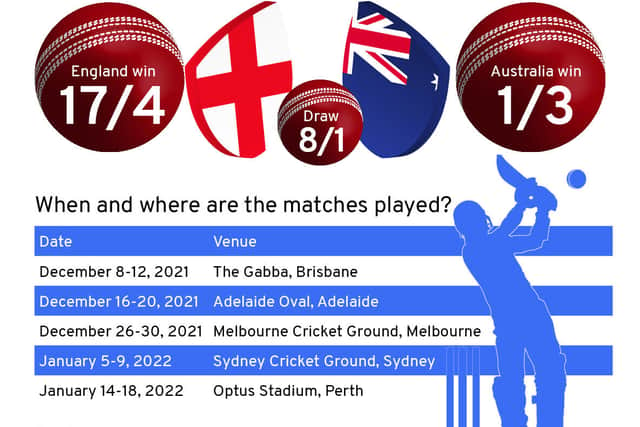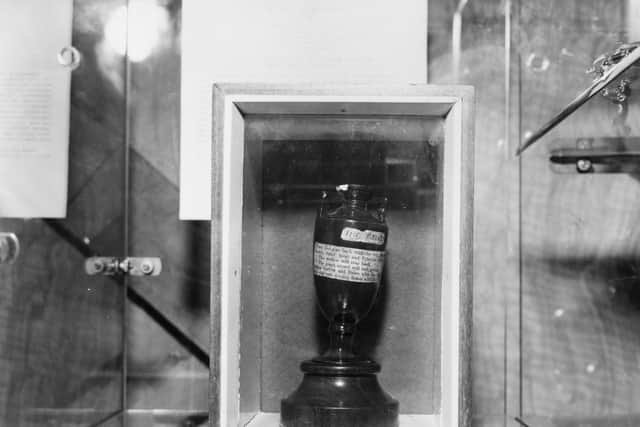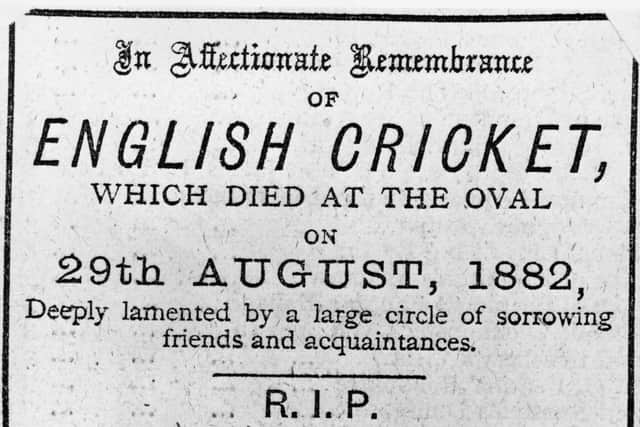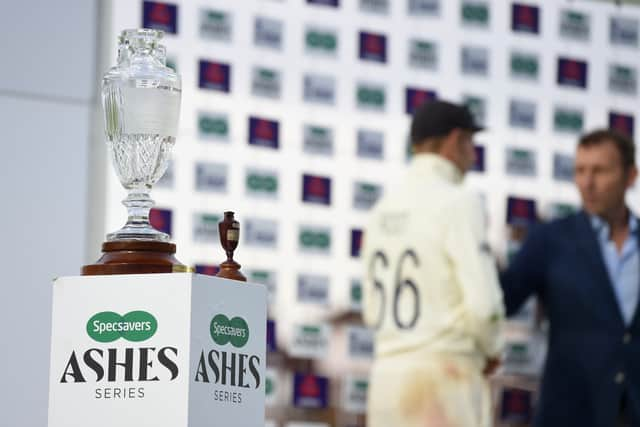Why is England vs Australia called The Ashes? Story behind name of cricket series and when it was first played
This article contains affiliate links. We may earn a small commission on items purchased through this article, but that does not affect our editorial judgement.
and live on Freeview channel 276
The iconic battle between England and Australia’s cricketers will once again take to the pitch next week on Wednesday 8 December 2021.
The last time these two sides faced each other came in 2019 in England and Australia were able to retain the Ashes after a 2-2 draw.
Advertisement
Hide AdAdvertisement
Hide AdThis time around, Australia will have a new Captain leading them after Tim Paine stepped down from his role following the leaking of a text scandal that happened four years ago. Vice-captain and fast bowler Pat Cummins will take on the role with Steve Smith stepping back into a captaincy role as he prepares to become vice-captain once more.


The clash between these two rival nations has been almost as historical as the game itself with the first Ashes Test reportedly taking place in 1878.
There are many historical myths as to the reasons behind the name for iconic series and fans have pondered for years why cricketers have fought so hard to keep their hands on a 10.5cm urn reputedly full of ash.
While the urn itself may be the smallest Trophy in the history of sport, its rich narrative have given every English and Australian cricket team an exceptionally strong passion to ensure that the Urn remains on just one side of the world.


Advertisement
Hide AdAdvertisement
Hide AdHere’s all you need to know about the history behind the naming of the unique series
When did England first play Australia in a Test match?
The geographical locations of the two nations made early Test series nearly impossible as the boat trip required was one that many cricketers were unable or unwilling to undertake, and as such, home teams were at an unfair advantage due to the quality and pool of players that would be available.
James Lillywhite pushed a tour of professional cricketers in 1876 and they set off for New Zealand and Australia, playing their first test against Australia in 1877.
Unfortunately Lillywhite was unable to include any of the leading cricketers of the day, such as ‘The Champion’ W.G. Grace and his team was described by the Australasian as ‘by a long way the weakest side that have ever played in the colonies.”


Advertisement
Hide AdAdvertisement
Hide AdIn what is now known as the first Test match between England and Australia, Australia won by 45 runs, but Lillywhite’s team fought back and won the second test by four wickets.
The success of the series meant that the Australians organised their own tour to England in 1878.
It was not until Australia’s tour to England in 1882 that the term ‘the ashes’ was coined and it was even further down the line that the series itself became so famously known as The Ashes.
Why is the series called the Ashes?
A day after the very first time Australia beat England on home soil, at the Oval Ground in 1882, the Sporting Times wrote a mock obituary of English Cricket and its conclusion damningly said: “The body will be cremated and the ashes taken to Australia.”
Advertisement
Hide AdAdvertisement
Hide AdThis visual representation of how both Australian and English fans felt regarding the result caught the imagination of the sporting world and it has since become one of the most famous sporting battles in the world because of this simple, yet potent phrase.


A few weeks later, the English Cricket team, captained by Ivo Bligh, travelled to Australia for the next tour with Bligh stating he would return with ‘the Ashes’. Meanwhile, his Australian counterpart, WL Murdoch also vowed that he would defend them.
On Christmas Eve 1882, Bligh was given a small terracotta urn as a symbol of the ashes that he had travelled to Australia to apparently regain.
On Bligh’s return to England, he placed this Urn on his mantelpiece, where it remained for the rest of his life.
Advertisement
Hide AdAdvertisement
Hide AdAfter his death, the urn was bequeathed to the Marylebone Cricket Club.
It is also thought that the contents of the Urn are the ashes of the stumps and bails during the match in which England won back ‘the ashes’ in Australia.
When did the series start being called the Ashes?
For many years, as the series was not referred to as ‘the Ashes’, there was no trophy or physical representation of the Ashes.
It was not until 1925 that the following verse was written in the Cricketers Annual:
‘So here’s to Chapman, Hendren and Hobbs,
Gilligan, Woolley and Hearne
May they bring back to the Motherland,
The ashes which have no urn!’
Advertisement
Hide AdAdvertisement
Hide AdIn 1926 Bligh then displayed the Ashes urn he had been given at the Morning Post Decorative Art Exhibition and gave a speech detailing how he received the distinctive award.


During the 1990s, the MCC recognised the two teams’ desire to compete for an actual trophy and commissioned an urn-shaped Waterford Crystal Trophy.
It was first presented to Mark Taylor after his Australian side won the 1998/99 Test series against England and has since been presented to the winning captain at the end of each Test series between Australia and England.
England will play Australia in the first test match at the Gabba, Brisbane, on Wednesday 8 December 2021.
A message from the editor:
Advertisement
Hide AdAdvertisement
Hide AdThank you for reading. NationalWorld is a new national news brand, produced by a team of journalists, editors, video producers and designers who live and work across the UK. Find out more about who’s who in the team, and our editorial values. We want to start a community among our readers, so please follow us on Facebook, Twitter and Instagram, and keep the conversation going. You can also sign up to our newsletters and get a curated selection of our best reads to your inbox every day.
Comment Guidelines
National World encourages reader discussion on our stories. User feedback, insights and back-and-forth exchanges add a rich layer of context to reporting. Please review our Community Guidelines before commenting.
